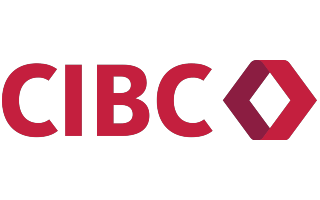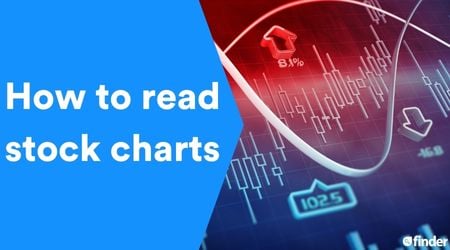Virtual reality has shifted from sci-fi speculation to real-world tech. But is there a viable industry beneath the hype? Investors may need to be patient if they plan to invest in this sector.
What is virtual reality?
Virtual reality (VR) is a computer-generated experience that allows users to interact with a simulated 3D environment. People typically access this environment with the help of a VR headset, or head-mounted display, like the Oculus Quest, PlayStation VR or Microsoft HoloLens. Virtual content can also be projected onto room-sized screens, but wearable technology is far more popular and accessible.
Virtual reality is an emerging technology with the potential for widespread popularity and adoption. Many of us got our first taste of VR watching 3D films. But today, virtual reality has expanded into video games, training simulators, real-estate tours, online retail, architectural design and more.
Virtual reality stocks are from companies that design or produce VR software and hardware. Most of the big names in virtual reality are tech companies with budgets big enough to support a VR program — think Google, Microsoft and Sony. These companies don’t exclusively focus on virtual reality but have the resources and capital to devote to a VR program.
Virtual reality vs. augmented reality
Spend any time digging into the technology behind virtual reality and you’ll invariably stumble across augmented reality (AR). Like virtual reality, augmented reality also tweaks our interpretation of the world around us. But instead of immersing the user in a simulated environment, augmented reality simulates an artificial object in real space.
Augmented reality requires a screen to superimpose its artificial object onto what we observe. One of the better-known examples of this technology is utilized by the mobile game, Pokemon Go. Users open the game on their phone and use the camera built into their device to observe the world around them — with a simulated image of a Pokemon thrown into the mix.
Why invest in VR stocks?
Virtual reality represents a shift in how we interact with technology and our environment — and it’s gaining traction. After Facebook dropped $2 billion on Oculus Rift in 2014, a number of other tech giants decided to make a play for VR tech, including Amazon, Apple, Intel and Google.
The market is poised for growth and the tech giants are in the game, many having taken big steps to flesh out their VR programs. A lineup of consumer headsets hit the market in 2016 and since then, apps, content and hardware continue to expand.
Beyond the potential for growth, investors may be interested in the VR market for its growing list of practical applications. This is an opportunity to back technology you may actually use and benefit from — now and in the future.
Risks of investing in VR stocks
Virtual reality is becoming increasingly popular but there are investment risks to consider, including slow industry growth and the technology’s novelty status.
When Zuckerberg splashed big cash on Oculus Rift, he made a prediction about the potential of the VR market. And that investment hasn’t quite paid off — at least not yet. The industry is growing, that much is clear. But how long will it take to become truly profitable?
Experts anticipated that VR headsets would be all the rage when they first hit shelves. But for the most part, sales fell flat. The high price tag could have something to do with it — the Oculus Rift costs USD $399 and the Vive Cosmos retails for USD $699. Granted, there are cheaper options on the market, but as it stands, consumers need to be prepared for a hefty price tag if they want a high-quality VR experience.
The reality is, consumer spending is a huge slice of the VR market and in many cases, this technology is still seen as a novelty. Investors interested in VR stocks will need to be prepared to sit tight — for a number of years, potentially — while virtual reality evolves from novelty to necessity.
Virtual reality stocks
There are few pure-play virtual reality stocks — that is to say, there are few companies that focus on virtual reality technology and nothing else. To add VR technology to your portfolio, be prepared to invest in technology companies that do more than VR.
- Spectra7 Microsystems Inc. (TSXV: SEV)
- Urbanimmersive Inc. (TSXV: UI)
- YDx Innovation Corp. (TSXV: YDX)
- Alphabet Inc. (NasdaqGS: GOOGL)
- Amazon.com, Inc. (NasdaqGS: AMZN)
- Sony Group Corporation (NYSE: SONY)
- Samsung Electronics Co., Ltd. (KRX: 005930.KS, LSE: SMSN)
- Apple Inc. (NasdaqGS: AAPL)
- Microsoft Corporation (NasdaqGS: MSFT)
- Snap Inc. (NYSE: SNAP)
- Facebook, Inc. (NasdaqGS: FB)
- Unity Software Inc. (NYSE: U)
- NVIDIA Corporation (NasdaqGS: NVDA)
- Tencent Holdings Limited (OTC Markets: TCEHY)
What ETFs track the virtual reality category?
Most of the ETFs that offer exposure to virtual reality stocks are heavily weighted with software and robotics companies.
- Communication Services SPDR Fund (NYSEArca: XLC)
- Global X Robotics & Artificial Intelligence ETF (NasdaqGS: BOTZ)
- Invesco QQQ (NasdaqGM: QQQ)
- Roundhill BITKRAFT Esports & Digital Entertainment ETF (NYSEArca: NERD)
- SPDR S&P Kensho New Economies Composite ETF (NYSEArca: KOMP)
- VanEck Vectors Semiconductor ETF (NasdaqGM: SMH)
How to buy virtual reality stocks
Eager to invest in virtual reality? Here’s a quick breakdown of the investment process.
1. Research stocks
There aren’t many pure-play VR stocks, which means the first step in your research will involve identifying those tech companies with virtual reality programs.
When sizing up prospective VR stocks, take a look at the company’s history. Startups have growth potential but can be volatile. Established companies offer more security but many be pricey to purchase.
You’ll also want to make sure you understand what the company does and what its plans are for its VR program. Taking time to research the company you’re interested in will help you make informed, targeted investment decisions.
2. Open a brokerage account
Next, you’ll want to open a brokerage account. There are plenty of online brokerages to choose from, but no two platforms are the same.
If you’re new to trading, explore the offerings of beginner-friendly brokerages, like Wealthsimple and Questrade. If you’ve got some investment experience under your belt, opt for a platform with more extensive research tools, like Interactive Brokers or TD Direct Investing.
3. Purchase stocks
After opening and funding your brokerage account, you’re ready to select and purchase stocks. Search for the stock by company name or ticker symbol. Once you’ve found the stock you want to buy, enter the number of shares you’d like to purchase and submit the order.
You can track the performance of your investments by logging into your brokerage account.
Virtual reality market projections
The VR market was worth USD $11.64 billion in 2021 and is expected to rise to USD $227.34 billion by 2029, reports Fortune Business Insights. Over this period, the industry’s anticipated compound annual growth rate (CAGR) is 45.2%.
In the coming years, the biggest driver for the market will be shifting preferences towards live virtual entertainment. This involves accessing live events and shows from home using technology.
Compare trading platforms
Before you can purchase VR stocks, you’ll need a brokerage account. Explore your options below.
Finder Score for stock trading platforms
To make comparing even easier we came up with the Finder Score. Trading costs, account fees and features across 10+ stock trading platforms and apps are all weighted and scaled to produce a score out of 10. The higher the score, the better the platform—it's that simple.
Bottom line
VR stocks represent an enticing investment opportunity, bolstered by a market on an upward trajectory and expanding the technology’s everyday applications. But while experts agree that virtual reality will continue to reach into our everyday lives, the process may take some time.
Before you invest, review your platform options with multiple providers to find the brokerage account best suited to your needs.
Frequently asked questions
More guides on Finder
-
Tesla ETF options in Canada
How to gain exposure to EV giant Tesla by investing in ETFs.
-
What is a stop-loss order?
Learn how a stop-loss order can help you limit losses or lock in profits when trading.
-
Best renewable energy stocks
These are the best renewable energy stocks to buy now in Canada.
-
10 gold stocks to watch
Check out some of the best gold stocks to buy right now in Canada based on company performance.
-
Best stocks to buy right now in Canada
Finder’s unique algorithm found the 20 best TSX stocks to buy right now.
-
Guide to investing in inverse ETFs in Canada
Your guide to inverse ETFs, their pros and cons, and how to invest in short ETFs.
-
Guide to 10 of the best ETFs in Canada
Learn how to choose the best ETFs to buy right now in Canada.
-
What is micro-investing?
Round up your spare change into big bucks with Canadian apps designed for saving, depositing and investing.
-
How to invest in gold
Compare four ways to invest in gold in Canada and learn the pros and cons of investing in gold.
-
Best investment accounts in Canada
Compare defensive and growth investments to find the best investment accounts in Canada for you.










